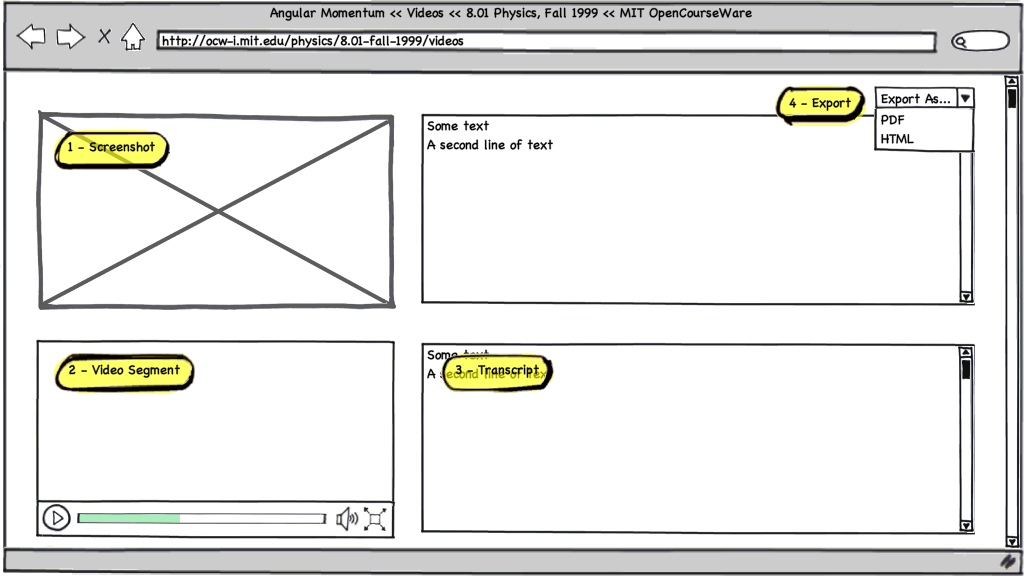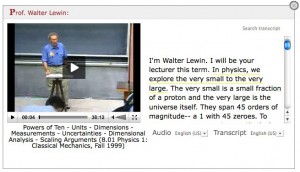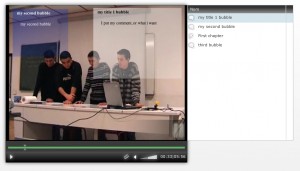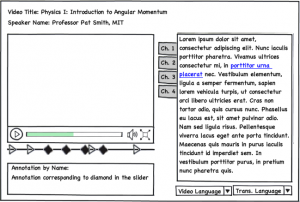During a meeting with our collaborators at ICAP, of the Universite de Lyon 1 in France, we discussed the concept of “paper based video”. Both ICAP and SpokenMedia have received a use case to create a low-bandwidth version of transcribed lecture videos. For user communities with low or no bandwidth, lecture videos with transcripts provide an opportunity for those users to “watch” the video by viewing screen captures and the corresponding text transcript.
Below is a mockup of what “paper based video” might look like.
In the mockup you can see the options for HTML or PDF. Our colleagues at ICAP are very familiar with the capabilities of Adobe products and have suggested PDF as an output mechanism because it allows for embedding video inside the document. We’ll have to see how this video embedded in PDF degrades if there is no network connection, and whether we can easily create and maintain a screen capture version and an embedded video version. (More on the HTML option in a later post.)




